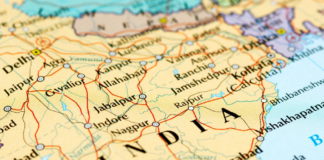Aberystwyth University abruptly defines “international politics” as an interdisciplinary subject which aims to understand the global challenges, intertwined ideas & practices that shape the universe, explains regional and international problems & thereby attempts to construct holistic & comprehensive solutions through talks & discussions, via international forums. Many international organizations like G20, IMF, ILO, WHO, WTO & several international groupings like QUAD, AUKUS, BIMSTEC, ASEAN, NATO, SAARC & few international conventions/protocols/agreements like Kyoto protocol, UNFCCC, UNCLOS, IND-AUS ECTA etc work towards achieving sustainable development and promoting international peace and prosperity.
Although different countries become a part of different groupings, they all strive towards the sole motto of attaining Global progress through social, financial, geopolitical & geographical ways & measures.
One such agreement that has made its appearance recently is IPEF or Indo pacific economic framework.
But, before heading on to IPEF, let’s first understand what is meant by Indo-pacific & what its strategic benefits are to the countries associated with it.
INDO-PACIFIC: INDO-PACIFIC is also known as the Indo-West Pacific or Indo-Pacific Asia.
The region comprises the blue tropical waters of the Indian Ocean, and the Western & central Pacific Ocean along with the seas connecting Indonesia, excluding the temperate & polar regions of both oceans. There are 24 countries ranging from the North American continent up to the Australian continent which is covered by the region. Some of which include – Australia, Bangladesh, Bhutan, Brunei, Cambodia, Fiji, India, Indonesia, Japan, Laos, Malaysia etc.
Significance of INDO-PACIFIC REGION: As once said by the U.S state secretary – “The Indo-pacific is the fastest growing region on the planet”; it ain’t any untrue that anything & everything that happens here is directly proportional to altering the trajectory of the globe. The Indo-Pacific represents the most populous and economically dynamic part of the world which gifts the world, the connectivity integrated with the freedom of navigation and consists of more than half of the world’s GDP. The region is also rich in mineral resources and maritime trade.
It fosters and strengthens the relationship between many Nations, with itself being a multipolar region. However, with great power comes great responsibility and greater conflicts too! Several Nations witness a continuous dispute over the ocean waters, with China being the major example of the same. When one country begins to claim its reign over the other, it indeed ruins the solidarity between the rest of the Nations. Hence, it has become of utmost importance to counter the Chinese threat in the region. Numerous initiatives & policies are in line to prevent Chinese aggression in the region and safeguard the development of the INDO-PACIFIC.
One of those agreements to pacify the Pacific includes IPEF. Let’s move on to the “What, why and how” questionnaire of the IPEF.
What is IPEF? The Indo-Pacific Economic Framework is a unique trade agreement initiated by the United States of America. It was inaugurated on 23rd May 2022 in Tokyo.
Aim of IPEF: IPEF aims to enhance sustainability, resilience, economic growth, inclusiveness, fairness, and competitiveness in the Indo-Pacific region. It also helps the U.S to incline its focus toward the region’s growth & development.
Background of IPEF in brief: In 2011, the Obama-led USA emphasized the “Pivot to Asia” by launching the Trans-Pacific Partnership (TPP) to intensify its concentration to widen the economic & geopolitical interests in the Asia-Pacific region. Even after Obama’s government, successive administrations maintained the same goal for too long. But, with the entry of Trump’s administration, Obama’s Asian balancing got staggered. ‘Free and Open Indo-Pacific’ strategy (FOIP) of the Trump ruling reduced its monitoring duty over the Chinese rise in the region. However, with the Biden administration coming into the picture, it strives to revive “Asia first” and not just “America first”, through IPEF.
IPEF MEMBER NATIONS: India, Indonesia, Japan, Republic of Korea, Malaysia, New Zealand, Philippines, Australia, Brunei, Singapore, Thailand, Vietnam and the United States. Together, they account for nearly 40% of the world’s GDP.
4 Pillars of IPEF: supply chain resilience, tax & anti-corruption, Fairtrade, infrastructure & decarbonization. IPEF is said to function through the above-mentioned even number of pillars & build cooperation & coordination between the member countries to keep Indo-pacific safe & secure. The 13 participating countries can choose from the four areas and select appropriate deals – without having to commit to all of them. IPEF however is not a general type of Free trade agreement unlike RCEP but rather aspires to blend the member nations based on the 4 parameters.
China’s viewpoint over IPEF: During the seminar of the Economic and Social Commission for Asia and the Pacific (ESCAP) on May 23, 2022, China’s Foreign Minister Wang Yi Wang stated that “China lives and thrives in the Asia-Pacific region”. Wang also pointed out that Beijing would advance China’s accession to the Comprehensive and Progressive Agreement for Trans-Pacific Partnership and the Digital Economy Partnership Agreement to counter the new trade and economic initiative of the Quad alliance, which indirectly indicated IPEF.
The effects/significance of IPEF are as follows:
promote stability in South Asia.
collaborate domains, such as health, space, and cyberspace.
deepen our economic and technological cooperation.
It aims to make the Indo-Pacific region an engine of global economic growth.
It offers a platform for all the like-minded countries in the Indo-Pacific region to cooperatively manage a rules-based regional order and prevent any single power from dominating the region or its waterways.
Challenges faced by IPEF:
Questions about the utility of IPEF have been raised as it does not guarantee free trade.
More clarity about the framework is essential.
U.S’s statement on IPEF calling it – a focus on ‘American workers’ development’ has also brought in waves of confusion if it will or will not stand up to the expectations of inclusive & overall development of the region.
U.S.’s previous promises (the Blue Dot Network and the Build Back Better Initiative) have not made any influential or remarkable changes in the region’s infrastructural needs, which is also why the IPEF faces a credibility challenge.
Way forward: Business, manufacturing, global trade, and investment are all centred around the Indo-Pacific area. The Indo-Pacific region is home to half of the world’s population and hence, IPEF is a significant step toward rebuilding US economic dominance in the area and manifesting a strong Indo-pacific. The IPEF’s launch in Tokyo was a symbolic gesture; however, bringing the IPEF to fruition will involve significant domestic and international prosperity.
I’d now like to conclude the essay by quoting Dwight Eisenhower as he beautifully says – “The world must learn to walk together, else, finally, the world will not walk at all”. Since Auschwitz, we know what man is capable of, and since Hiroshima, we know what is at stake. Hence, let us all strive to work towards expansion of horizon, expanding our mental framework, expanding visions and make & take prosperity forward, through patience & perseverance, without compromising the quality of service rendered and we will find that ‘World belongs to us & we belong to the world.










